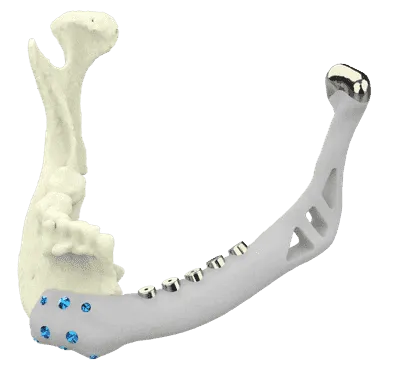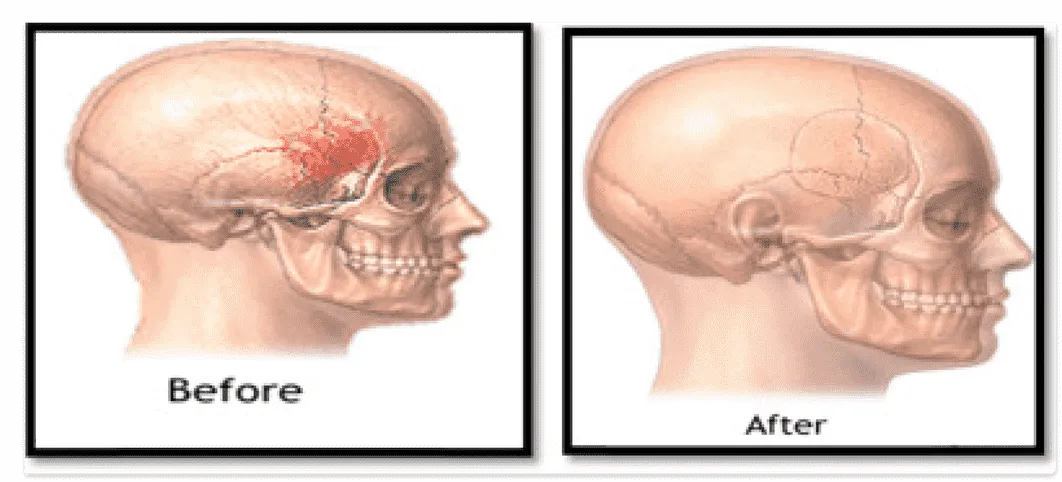
Reviving Life after Mandibular Removal: Goals of Mandibular Reconstruction
Key Goals of Mandibular Reconstruction:
- Restoring Bone Continuity: Mandibular Reconstruction endeavors to bridge the gap left by the missing bone segment, ensuring structural integrity and stability.
- Facilitating Dental Restoration: By providing a robust foundation, Mandibular Reconstruction paves the way for effective dental restoration, enhancing oral function and aesthetics.
- Preserving Soft Tissue Integrity: Mandibular Reconstruction not only addresses bone deficits but also addresses the need for soft tissue reconstruction, ensuring both internal lining and external coverage.
- Restoring Lower Lip Functionality: Sensate and functioning lower lip with a sufficient buccal sulcus are essential components of Mandibular Reconstruction, contributing to improved oral competence and aesthetics.
- Enhancing Appearance and Functionality: Ultimately, the overarching goal of Mandibular Reconstruction is to restore the patient's appearance and functional capabilities, reinstating confidence and improving overall quality of life.
Experience the transformative power of Mandibular Reconstruction with Dr. Amit Chakraborty, a seasoned expert in the field. Take the first step towards restoration and rejuvenation.
Unravelling the Benefits of Vascularized Free Fibula Flap Mandibular Reconstruction
Advantages of Vascularized Free Fibula Flap (VFF) Mandibular Reconstruction:
Rapid Healing and Reduced Immobilization Time:
VFF facilitates swift healing, necessitating shorter periods of immobilization post-surgery, enabling patients to resume normal activities sooner.
Lower Risk of Non-union:
With VFF, the risk of non-union, or failure of bone healing, is significantly reduced, ensuring a more successful outcome.
Enhanced Infection Resistance:
The vascularized nature of the fibula flap confers greater resistance to infection, minimizing the chances of post-operative complications.
Prevention of Bone Resorption:
VFF offers superior protection against bone resorption, preserving structural integrity and long-term functionality.
Minimal Complication Rates:
VFF procedures boast low complication rates, providing patients with peace of mind and a smoother recovery journey.
Experience the Transformation
Dr. Amit Chakraborty's expertise in Vascularized Free Fibula Flap Mandibular Reconstruction at the Amit Cancer Care Clinic ensures optimal outcomes and renewed hope for oral cancer patients.
FAQs
-
Q: What is mandibular reconstruction?
Mandibular reconstruction is a surgical procedure aimed at restoring the structure and function of the mandible (lower jaw) after it has been damaged due to trauma, tumor resection, or other medical conditions. The goal is to reestablish continuity, improve oral function (such as chewing and speaking), and enhance facial aesthetics.
-
Q: Why might I need mandibular reconstruction?
You may need mandibular reconstruction if you have suffered significant damage to your jaw from:
- Traumatic injuries (e.g., fractures).
- Surgical removal of tumors (benign or malignant).
- Chronic infections (e.g., osteomyelitis).
- Osteoradionecrosis (bone death due to radiation therapy).
-
Q: What are the common techniques used in mandibular reconstruction?
Several techniques can be employed, including:
- Vascularized bone flaps: Such as the fibula free flap, which provides both bone and soft tissue.
- Non-vascularized bone grafts: Used for smaller defects.
- Reconstruction plates: Metal plates that support the jaw during healing.
- Osteocutaneous flaps: These involve the transfer of bone along with overlying skin.
-
Q: Are there risks associated with mandibular reconstruction?
As with any surgery, there are risks, including:
- Infection at the surgical site.
- Complications related to anesthesia.
- Nerve damage, potentially leading to altered sensation or facial weakness.
- Issues with the graft or flap, such as failure to integrate or vascular complications.
